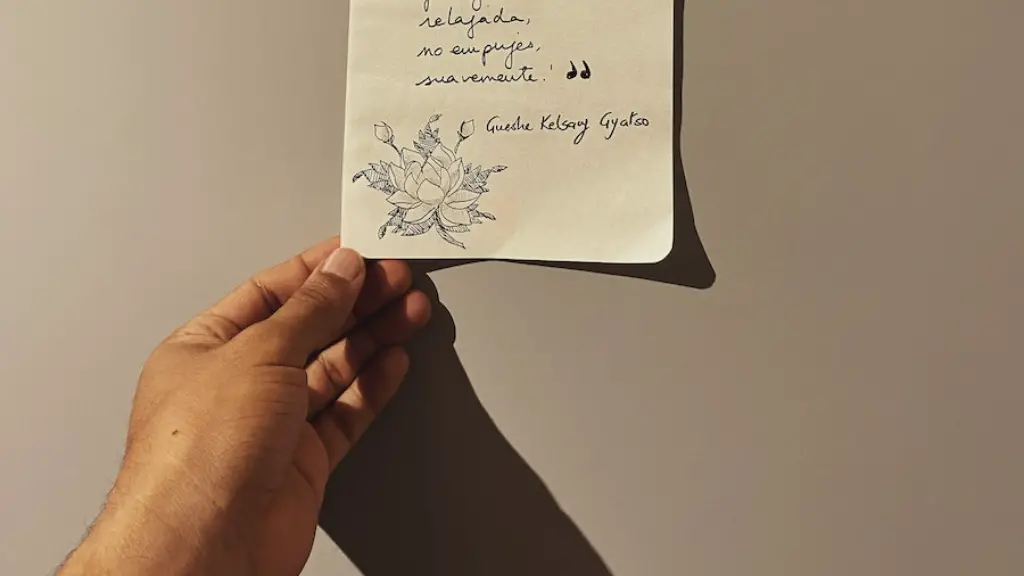Creative Writing Exercise
Poetry is an ancient and powerful form of art. Even though it’s an old art form, it can still be used to speak to a new generation of readers and listeners. Making poetry interesting for a new generation requires creative writing techniques and a thoughtful approach. Here are some tips for making poetry more vibrant, engaging, and accessible to listeners and readers.
Know Your Audience
When crafting a poem, it’s important to understand the impact that language can have. Knowing your audience is key to connecting with them. Tailor the message and meaning of your poem to the age and intended audience. Speakers and writers of all ages should be mindful of any potential bias that could be embedded in their words.
Express with Emotion
When conveying a message with a poem, it’s important to choose words that evoke an emotional response. Use language that will emotionally engage the reader or listener. Words have the power to stir up emotions, so selecting the right ones can make a poem captivating.
Experiment with Different Styles
Writing in different poetic forms can help vary the tone and structure of the poem. Different poetic genres call for different techniques: from sonnets and haikus to lyrics and free verse. Trying different styles and techniques can add new dimensions and perspectives to the poem.
Make it Accessible
When crafting a poem, speakers and writers want to ensure that the subject matter of the poem is understood by a broader audience. The topics of old poetry can feel a bit too distant for a modern reader, so research is imperative. Consider finding ways to bridge ancient concepts with new ideas to make poems accessible for more audiences.
Preserve Meaning
It’s important to read and listen to the words of one’s poem. Don’t be afraid to rephrase, refine, and repeat words to ensure the message and tone of the poem remains consistent. Listeners should be able to understand the theme and message of the poem—so it’s important to maintain focus and ensure that the words keep their intended meaning.
Explore Current Events
When crafting a poem, consider using current events or hot topics to inspire the poem’s topic. This could help make the poem more relevant to the audience and spark meaningful conversations. If a speaker is aware of their audience and their cultural context, they can use these insights to help shape the tone and focus of the poem.
Add Variety
Exploring different poetic styles or topics can help make poetry more interesting. Additionally, writers can use poetic devices and literary devices to add beauty and depth to their poems, such as alliteration, similes, and metaphors. Adding elements of surprise or shock may also help engage readers.
Incorporate Art Form
Showcasing poems through an art form, such as song or spoken word, can add more dynamic context to a poem. Incorporating a different art form can help listeners appreciate and even understand the poem in a new way. Incorporating vocals and instruments can also help a poem stay interesting, as certain sounds and rhythms can evoke certain emotions from the audience.
Use Colorful Language
Using language that paints a picture with the reader’s imagination can help captivate the reader. Choose vivid words to give more life to descriptions in the poem. Creative writing exercises like visualization, description, and personification can help make the poem more dynamic and engaging.
Engage the Reader
Engaging the reader by making them feel involved or responsible can also add a unique element to the poem. For example, the poem may ask a question or have various perspectives within it. Writing in a conversational tone or using rhetorical questions can also add a level of interest to the poem.
Teach a Lesson
Apply a moral or lesson within the poem. This could be in the form of advice, criticism, or a warning. Poetic forms such as riddles, stories, and metaphors can make a lesson more enjoyable and easier to follow.
Use a Unique Voice
Poetry often requires one to find and use their own voice, as other forms of art do. Choosing a unique voice can help differentiate the poem from the works of other poets and make the poem sound distinct. A poem should be written in a way that is true to the author and that expresses their individual views and emotions.
Establish a Meaningful Message
A poem should have a clear message and meaning. This should be evident throughout the poem’s entirety, without sacrificing any of the other elements that can make it interesting. Encapsulating a concise and strong message takes practice, but it can be beneficial to keep the poem’s purpose in mind while writing.
Subvert Expectations
Do something unexpected with the poem. A surprise element can make a poem stand out and keep a reader engaged. Subverting expectations may have the readers expecting one thing, but the poem slowly reveals another meaning or idea.
Incorporate Humor
Humor can make a poem more enjoyable, but it should be used carefully. It should be used effectively and not just as a filler. If the poem can evoke laughter, it can be an effective tool for conveying a message or even making a point.
Bring Folklore and Traditional Poetry Into Modern Context
Folklore and traditional poetry provides a great foundation for writing new works. Analyzing the content of these works can help a poet find inspiration for creating something contemporary, relatable, and meaningful. Incorporating traditional and ancient forms of poetry can give listeners a sense of familiarity and connection to the poem.
Transform Topics into Poetry
It’s possible to transform almost any topic into a poem. To make a poem interesting, consider the needs of the target audience and the impact that the topic can have. Applying various poetic techniques can help a poem become more enduring and unforgettable.
Focus on Clarity
It’s important to ensure the poem is clear and easy to understand. Aim to use language that is simple and accessible to a wide range of listeners and readers.
Incorporate Visual Aids
Using visual aids to go with a poem can easily add more life to it. This can be used to provide context and a better connection for readers. Examples of visual aids for a poem could include collages, photographs, drawings, and other illustrations that the readers can connect to.
Be Open to Experimentation
Sometimes the best way to make a poem interesting is to be open to experimentation. Releasing any preconceived notions of what a poem should be and embracing new concepts can help a poet create something unique. With experimentation comes the opportunity to develop novel and interesting pieces.





